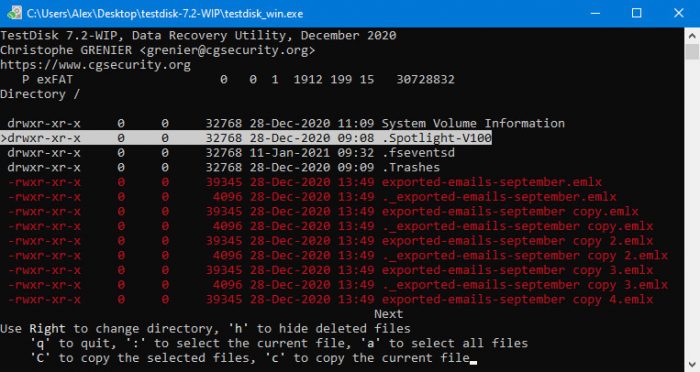
- #Gui for testdisk how to
- #Gui for testdisk install
- #Gui for testdisk update
- #Gui for testdisk software
- #Gui for testdisk download
#Gui for testdisk install
Install TestDisk on Red Hat and CentOS 7 yum install epel-release
#Gui for testdisk update
Install TestDisk on Ubuntu and Debian sudo apt update
#Gui for testdisk download
You can download the TesDisk setup file from the link below or use the command-line to install it. Installing this highly reliable utility is fast and easy. It is a powerful command-line utility that is easy to use and fast to understand. It is also useful in recovering a non-booting disk if an error was caused by harmful software, virus, or even accidental file deletion. TestDisk is an opensource Data recovery tool mainly used to retrieve damaged partitions.
#Gui for testdisk how to
In this article, we will focus on the six best recovery tools available for Linux, and also show you how to install them on the most common Linux distributions.
#Gui for testdisk software
Best File Recovery Tools For LinuxĬurrently, there are many Linux data recovery software in the market, giving users a large pool to choose the right one. The special tool I’m talking about is the File Recovery tool. It means anyone can use a special tool to get access to that memory sector and recover the data before other data overwrites it. The operating system just marks the memory sector of the deleted file location as available space for the next write sequence. How is it possible to recover the data after deletion?Īs strange it may sound, the data is not ‘actually’ deleted from the hard disk after you remove the file from your Linux system (or any OS if it matters) using the delete key.

They can range from storage media like Hard drives, SSD, USB drives, DVD/CD, and other electronic storage devices. If your selected device comprises several partitions, PhotoRec will display all the partitions and enable you to choose the partition that was home to the deleted file.The process of Data recovery is the retrieving of either lost, damaged, inaccessible, or corrupted data from storage devices. You can help speed things up by restricting the recovery to search for specific file types, such as pdf, jpg or mp3.Īfter selecting the device or partition from which you wish to recover deleted files, use the right/left arrow keys to select the File Opt button and press Enter. Using the up and down arrow keys select the drive that you wish to recover, then use the left and right keys to select Proceed and press Enter. You’ll be presented with the welcome screen that lists all the partitions as well as connected disks and devices.ģ.

Open the terminal and fire up PhotoRec with sudo powers. This directory should not be on the same partition or device from which you are attempting to recover files.Ģ. Using the file manager, create a directory where you wish to store the files recovered by PhotoRec. Although both PhotoRec and Testdisk can recover files from deleted and then overwritten partitions, it decreases the chances of recovering all the files.ġ. It’s for this reason why you should ideally stop using the system as soon as you realise that you’ve deleted an important file, because you’ll minimise the risk of its space being occupied. This means that until that space is taken up by another file, the original file is still there and can be retrieved using specialised data recovery tools.

Instead, the file system merely marks the file as deleted and assigns the space the file occupied as available for use. When you delete a file, it isn’t immediately zapped into oblivion. $ sudo dnf install testdiskīefore you start using PhotoRec, it’s important to understand how a filesystem handles deleted files. If you are using a Fedora or other RPM based distro, use dnf instead. This is why PhotoRec can work with FAT, NTFS, ext3, ext4 and other partition types. Instead, it focuses on the unique signatures left by the different file types to identify them. Although initially designed to only recover image files (hence the name), PhotoRec can be used to recover just about any manner of file.Įven better, PhotoRec works by ignoring the underlying filesystem on the specified partition, disk or USB drive. But if all you’re interested in is recovering deleted files from a partition, hard disk or even a USB drive, you can use PhotoRec. Whether this is on account of you overwriting or deleting a partition, or a partition becoming unreadable for any reason, Testdisk can help you restore the partition, or at the very least, recover data from it. Testdisk is best suited for recovering lost partitions. You can use either of these tools to recover files, but each has a job that it’s best suited for. Developed by CGSecurity and released under the GPL, PhotoRec is distributed as a companion utility of Testdisk, which can be used to recover and restore partitions.


 0 kommentar(er)
0 kommentar(er)
